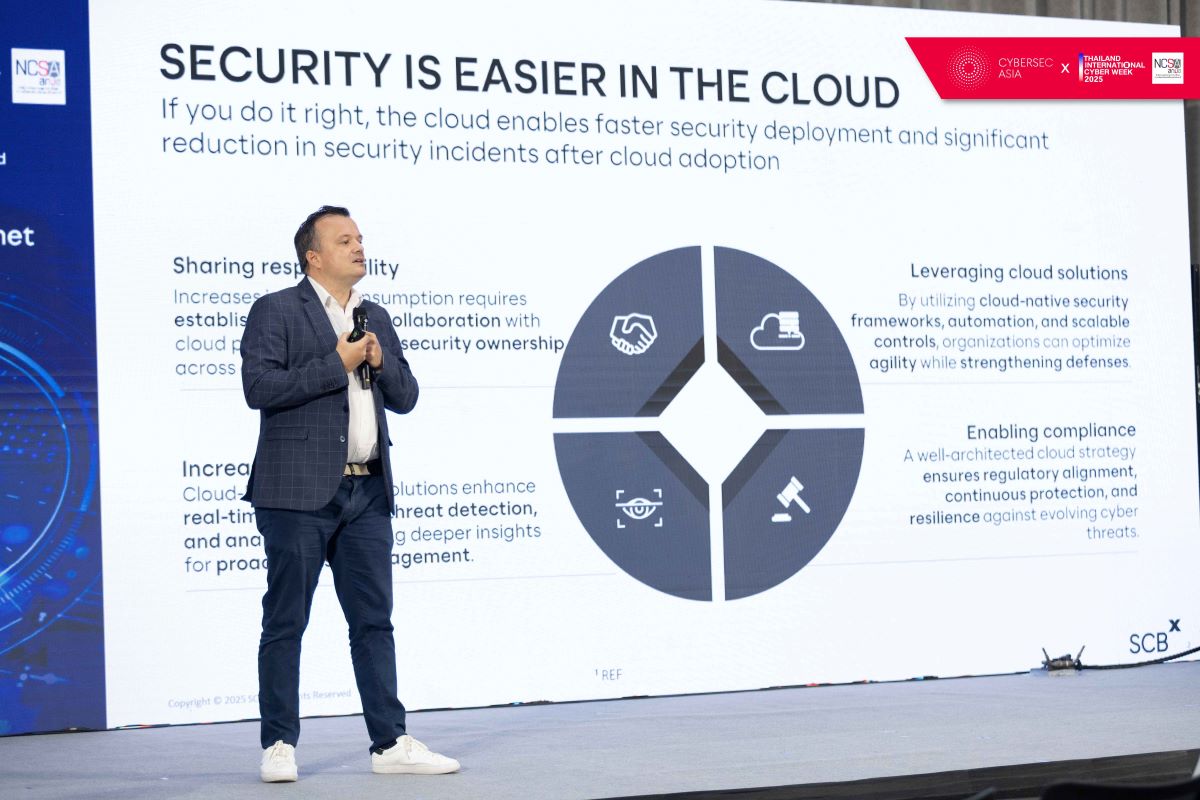In a revealing discussion on the topic of “Banking a transitioning Asia: Digital dollars and green sense” at the Singapore FinTech Festival 2024, Dalad Tantiprasongchai, Chief Operating and International Officer at SCBX, outlined how Thailand’s oldest financial group is positioning itself at the forefront of the region’s green finance revolution.

As Thailand emerges as Southeast Asia’s second-largest digital economy, SCBX, Thailand’s oldest and largest financial group with a 117-year history, is undertaking a strategic transformation to address the convergent challenges of digital innovation and climate transition.
“When we made a structural decision to set up SCBX as a group holding company about two and a half years ago, we put Siam Commercial Bank under this financial group,” Dalad explained. “Part of that underlying thesis is thinking through the next S-curves, the macro global themes that are really converging for us as a financial player in the country, and climate domain was identified as one of our three strategic pillars.”
Dual Role: Group internal sustainability mandate AND Strategic mission of becoming the Region’s leading ‘Climate Orchestrator’
SCBX’s approach to sustainability is two-pronged, focusing both on internal accountability and climate as a value creator to our portfolio companies and clients. “There is that internal sustainability aspect, which we recognize as being critical and important for us,” Dalad noted. “But there is a whole climate domain as a business, as a value creator, which we have identified as one of the prioritized S-Curve, to charter our next wave of strategic growth.”
The financial group’s strategy extends beyond its own operations to encompass its role as a climate domain orchestrator. Our position as Thailand’s largest financial group gives us a unique vantage point to steer, orchestrate key actors across sectors that are at the heart of climate transition to come together and problem-solve on scaling solutions, capital and investments required to not only elevate Thailand’s position as the leading Green ecosystem in ASEAN, but to effectively solve real climate issues.

Collaborative Approach to Risk Management
In addressing the challenges of financing climate transition projects, Dalad emphasized the importance of risk management and stakeholder collaboration: “Life is about risk management, and professional life and commercial decisions are really all about balancing risk. And at the core of our DNA as a financier, it’s also this prudent risk management DNA that’s at heart.”
SCBX’s approach involves bringing together various stakeholders across value chains, whether in electric vehicle mobility, food security, or renewable energy sectors. “You really need to align the interests across the different key actors,” she stated, highlighting the bank’s unique position as a neutral player in orchestrating these collaborations.
Strategic Partnership with Government
The financial group has taken a proactive role in shaping national policy, collaborating with McKinsey to develop a Green Growth Master Plan for Thailand. This initiative aims to position Thailand as a regional hub and accelerator in building a green ecosystem.
“We co-authored an internal study with McKinsey to help the government think about what is the “Green Growth Master Plan” going to look like for a country like Thailand? What is the role that Thailand could play for the region, and for the country in elevating itself as a regional hub, elevating itself as a kind of first mover or accelerator, in building that green ecosystem?” Dalad shared.

Addressing Implementation Challenges
One of the key challenges identified is the assessment and financing of large-scale climate projects. “Traditional banks, and most banks are so unclear about how to assess the risk of these really high cost, high capex, large projects, and a lot of climate projects are very heavy in this regard,” Dalad explained.
To address this, SCBX is focusing on building internal capabilities to identify and prioritize projects, developing new risk models, and working to bring liquidity to the market through an ecosystem of investors with different risk appetites and capital requirements.
The bank’s strategy represents a comprehensive approach to sustainable finance that could serve as a model for other financial institutions in emerging markets, particularly those grappling with the dual challenges of digital transformation and climate transition.










